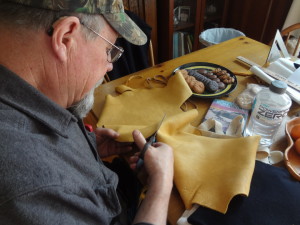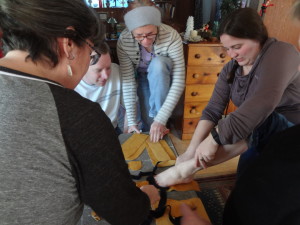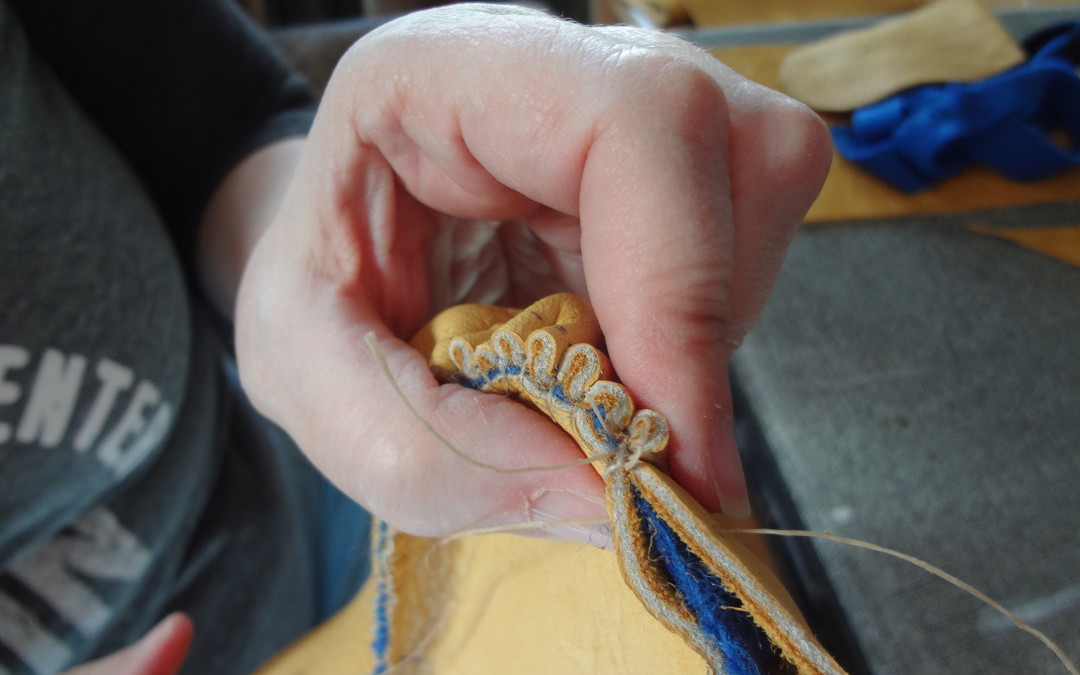Winter was giving way to spring as more than a dozen members of La Compagnie gathered in Minneapolis for a moccasin making workshop. Since many of our events take place in traditional Ojibwe country and some of our members wear this style for work, we opted to make Ojibwe style, high top “pucker toe” moccasins. A huge order of elk hide, wool scraps for welting, brown paper, artificial sinew, glovers needles and scissors and we were all set to go!

Steve B. carefully cuts out his moccasin pieces from an elk hide.
It was a bit of a chaotic start as we traced our feet and began creating our own patterns. That is the tricky thing about moccasins – everyone’s feet are different. It took a bit of trial and error to figure out the right pattern for everyone. Lots of brown paper was sacrificed!
Once our patterns were created, leather work began. To create the signature look of this style of moccasin, little gathers or puckers need to be created along the toe to gather the bottom of the shoe to the tongue. Start in the center of the toe and work backwards along each side towards the ankle. Work inside out. Sandwich a strip of wool welting in the seam to later protect the stitching and keep sand from “crawling” in. Much easier to say than sew!
Once the toes are done, sew the heel, add the top wrap and ties and huzzah! One moccasin complete! Almost everyone was able to finish one shoe during the course of the day.
Just before we wrapped up a very productive day, we cut nice thick insoles from some very fine buffalo that one of our members had donated – we’ll be both properly shod and comfortable this summer!

Melissa P. demonstrates how to measure where to end pucker toe stitches.
While I have made these moccasins for years, this was my first time teaching the skill to a group of people. I learned a lot of lessons that will hopefully result in a better tutorial to be shared in a future blog post!

